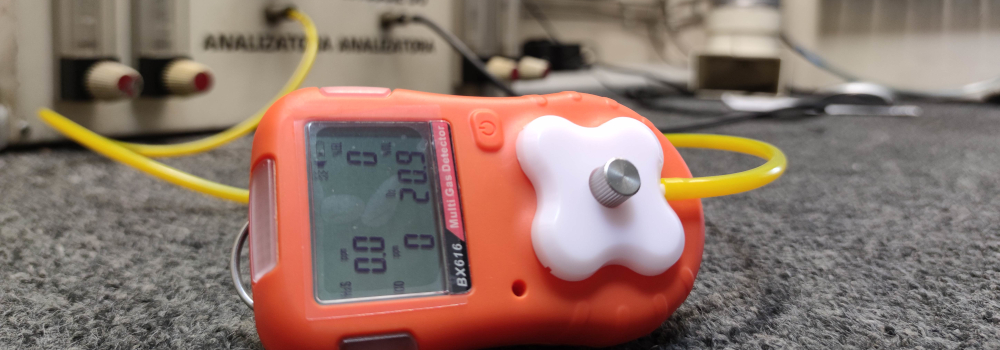Gas sensor calibration is the procedure of verifying and adjusting the accuracy and sensitivity of a sensor by exposing it to certified reference gas concentrations. The process ensures that the sensor’s response corresponds to defined values, guaranteeing reliable detection and measurement of target gases.

Why are gas sensors calibrated?
Measurement Accuracy
The primary objective of calibration (adjustment) is to ensure that a gas sensor provides accurate gas concentration readings. Without regular calibration, sensors may gradually lose accuracy, leading to incorrect measurements. Even minor deviations can have serious consequences, especially in environments where measurement accuracy is critical for safety and process efficiency.
Safety
In many environments, such as industrial plants, chemical laboratories, or public buildings, accurate monitoring of gas concentrations is essential for safety. Gas sensors that are uncalibrated or improperly calibrated may fail to detect hazardous gas levels or, conversely, may trigger false alarms. In both cases, this can result in dangerous situations, including risks to human health and life.
Regulatory Compliance
In many industries, strict regulations and standards govern gas concentration monitoring. These require regular calibration of sensors to ensure compliance with applicable standards. Adhering to these regulations is not only a matter of legal obligation but also a responsibility for ensuring the safety of employees and the surrounding environment.
When should gas sensors be calibrated?
Regular Intervals
Gas sensor calibration should be performed at regular intervals. The recommended calibration frequency may vary depending on the sensor manufacturer and its application. A typical calibration interval ranges from 6 to 12 months. In some cases, in more demanding environments, sensors are calibrated more frequently.
After Component Replacement
If any part of the sensor (e.g., electrodes, detection elements) has been replaced, the sensor should be calibrated. This ensures that the new component does not negatively affect the device’s readings or reduce monitoring accuracy.
After Exposure to Extreme Conditions
If the sensor has been exposed to extreme conditions, such as high temperature, high gas concentration, vibration, or other factors, its accuracy may be affected. After such an event, calibration should be carried out to verify that the sensor still operates correctly.
After a Long Period of Inactivity
If the sensor has not been used for a long period, its detection properties may have changed. Calibration before reuse is essential to ensure proper operation.
Why is it important to adjust (calibrate) gas sensors?
Regular calibration of gas sensors is crucial to ensuring safety in environments where they are used. Accurate measurements allow for a quick response when hazardous gas concentrations are detected, helping to prevent accidents and health risks.
Calibration also helps prevent costly repairs or equipment replacements. Sensors that are not regularly calibrated may become damaged or replaced prematurely due to incorrect readings. Regular calibration extends the service life of sensors and ensures their effective operation.
Moreover, regular gas sensor calibration ensures compliance with applicable standards and regulations. Accurate and reliable data are essential for making sound, measurement-based decisions. Whether related to worker safety or industrial process control, calibration guarantees that the data used as a basis for decisions are correct.
Summary
Gas sensor calibration is not only a technical requirement but also a key practice for ensuring safety. It contributes to cost savings, regulatory compliance, and the reliability of measurement data. Regular calibration should therefore be regarded as an investment in the safety and efficiency of gas monitoring systems.
